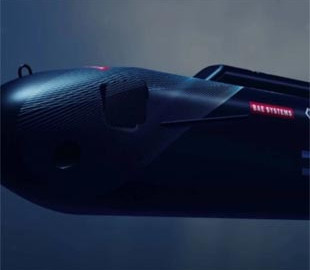
The unmanned underwater vehicle can dive to 3,000 meters, far exceeding the capabilities of most modern submarines. This allows Herne to operate effectively even in the deepest parts of the ocean.
The UK has unveiled its advanced autonomous submarine, Herne, designed to protect vital underwater infrastructure from growing threats. The new vessel is a response to strategic challenges, including the activities of Russia, whose underwater systems are reportedly monitoring critical energy and information networks in the North Sea. This was reported on January 21 in Army Recognition.
It is noted that the new device is designed to monitor the water area where fiber-optic cables are laid, providing global Internet traffic, as well as pipelines for transporting energy resources. Recent intelligence indicates that Russia is using unmanned underwater vehicles by the Main Directorate for Deep-Sea Research (GUGD) for reconnaissance and possible sabotage.
A new era of underwater technology
The Herne submarine was developed by the British company BAE Systems as an autonomous solution for protecting underwater infrastructure. The device is distinguished by its non-standard approach to design. Its length is 12 meters, and its weight varies from 8 to 10 tons, depending on the payload.
Unlike classic submersibles with a single cylindrical shape, Herne has sealed bow and stern sections, while the cargo compartments remain freely fillable. This modular structure allows you to replace the payload and power sources in less than an hour.
The submarine is equipped with two cargo compartments with a volume of 2.5 m³ each, which can be combined into a single compartment with a volume of 5 m³ for larger loads. Herne can also carry torpedoes, underwater drones, sensor arrays or an anchor for long-term anchoring on the seabed.
One of the key advantages of the vehicle is its diving depth — up to 3,000 meters, which significantly exceeds the capabilities of most modern submarines. This allows Herne to operate effectively even in the deepest parts of the ocean.
The submarine is powered by two electric motors, each of which drives a separate propeller. This design makes it possible to continue the mission even in the event of one engine failure. Lateral and vertical thrusters are used for control, which provide high maneuverability.
Herne is powered by lithium-ion batteries, which allows it to operate autonomously for 7-10 days. However, the developers have already tested a version with hydrogen fuel cells, which increase the range to 5,000 kilometers and allow the device to be underwater for up to 45 days.

